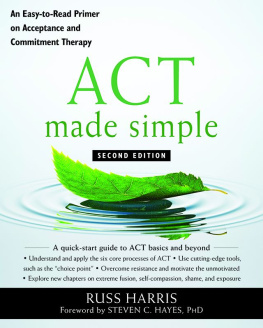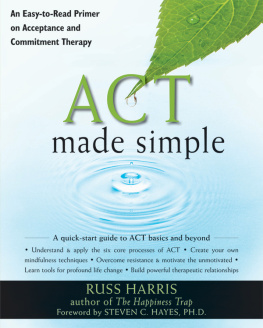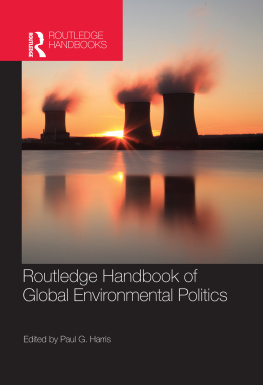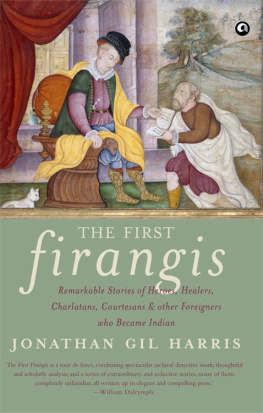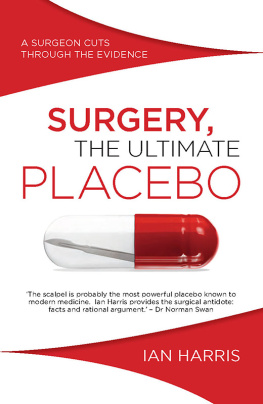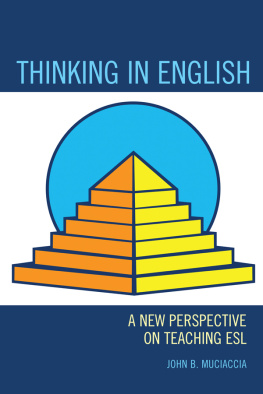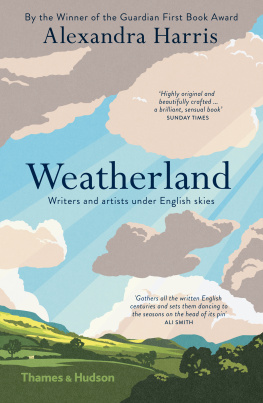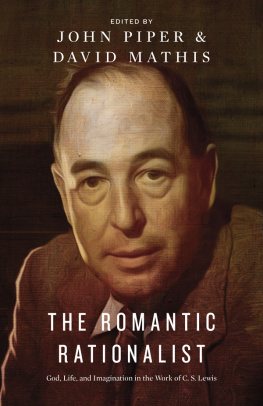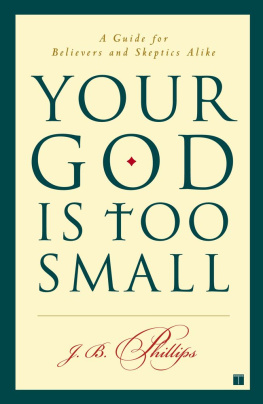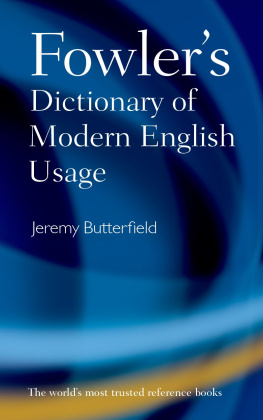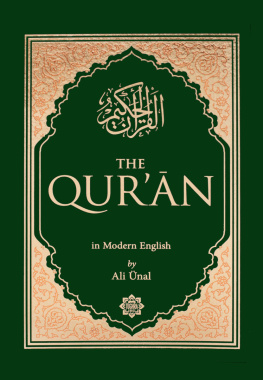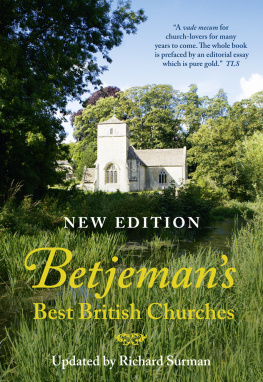ABOUT THE AUTHOR
Alexandra Harris was born in Sussex in 1981 and was educated at the University of Oxford and the Courtauld Institute, London. She is the editor (with Laura Feigel) of Modernism on Sea and is currently Lecturer in English at the University of Liverpool.
Other titles of interest published by
Thames & Hudson include:
A Writer's Britain
The Most Beautiful Villages of England
Bill Brandt
See our websites
www.thamesandhudson.com
www.thamesandhudsonusa.com
To Robert Harris
and in memory of Rosalie Harris
with love and thanks
First published in the United Kingdom in 2010 as
Romantic Moderns: English Writers and the Imagination from Virgina Woolf to John Piper
ISBN 978-0-500-25171-3
by Thames & Hudson Ltd, 181a High Holborn, London WC1V 7QX
and in the United States of America by
Thames & Hudson Inc., 500 Fifth Avenue, New York, New York 10110
Romantic Moderns 2010 Alexandra Harris
This electronic version first published in 2015 by Thames & Hudson Ltd, 181a High Holborn, London WC1V 7QX
This electronic version first published in 2015 in the United States of America by Thames & Hudson Inc., 500 Fifth Avenue, New York, New York 10110.
To find out about all our publications, please visit
www.thamesandhudson.com
www.thamesandhudsonusa.com
All Rights Reserved. No part of this publication may be reproduced or transmitted in any form or by any means, electronic or mechanical, including photocopy, recording or any other information storage and retrieval system, without prior permission in writing from the publisher.
ISBN 978-0-500-77088-7
ISBN for USA only 978-0-500-77089-4 (e-book)
On the cover: John Piper, Dungeness, 1938. Private Collection.
Photo Matthew Hollow The Piper Estate
CONTENTS
Toller Fratrum is a small village in Dorset, close to where the River Hooke meets the Frome. Beside the farmhouse and a clutch of other stone buildings is the tiny church of St Basil. It was mostly rebuilt in the nineteenth century, but just to the left of the door as you enter, in the corner by the bell ropes and the unused heater, is a decorated font that reaches further back in time. Long-limbed figures with large moon faces, bulbously carved in deep relief, crowd together as if there were not quite room for them all. Wide eyes look out from the sandstone sides as they have been doing since the twelfth century and as they were still doing in 1936, when the artist John Piper arrived.
He had been driving through England with his partner, Myfanwy Evans, photographing hundreds of churches and monuments. Standing in the draughty gloom of a remote nave, he would dampen the stone with a sponge so that the shapes were thrown into relief by his paraffin lamp. The light revealed some long-forgotten wonders. Crouching to enjoy the Toller Fratrum font, he thought about the primitive, expressive impulse in the art of his contemporaries. The Norman carvings seemed to him to have all the bigness and strangeness of a portrait by Picasso. He focused his camera on a figure who might be Christ or Moses and who supports the decorative rim of the font with raised hands. The figures face and large arms look heroic, but beneath the little pleated skirt of his tunic, he has shaky-looking knees. At eight hundred years old, the image still felt close and alive.
Piper was thirty-two. After a false start as a lawyer to satisfy his father, he had been to the Royal College of Art and made an inspiring group of friends. He married one of them Eileen Holding but the marriage had broken down and now Piper was in love again. It was an exciting time. All the talk was about Paris and the latest abstract painting, and Piper was working hard on a series of geometric constructions. He was also looking at the art of Englands early sculptors, and thinking of an odd story from the thirteenth-century chronicles of Peter Langtoft. It described a wander wit of Wiltshire who went rambling off to Rome to study the antiquities without ever having visited Stonehenge. Appalled at his ignorance of his own country, the Roman antiquaries kicked him out of doors and bad him goe home and see Stonage. This comic parable appealed to Piper. All too often, he thought, we rush off to distant places without giving a thought to the astonishing things on our doorsteps. More than anything he wanted to goe home and see not only prehistoric Stonehenge, but also the boldly striped lighthouse at Dungeness, the gardens at Stourhead, old stone barns in Oxfordshire, the lichen-patterned walls of Cornish chapels, the decorated interiors of pubs, the theatrical architecture of country houses.
These were Pipers personal enthusiasms, but in wanting to celebrate them he was doing something more than personal. Other people were showing new appreciation of such places, and by the late 1930s it looked to many observers as if a whole concerted project of national self-discovery was underway. Artists who had previously felt compelled to disguise themselves as avant-garde Frenchmen were now to be found on English beaches sheltering their watercolours from the drizzle. Anthologists (John Betjeman, Geoffrey Grigson, Herbert Read) collected up the verse of eighteenth-century parsons or packed vivid fragments of Romanticism into the tight compass of a paperback, while tourists paused in lay-bys to consult some of the newly written guidebooks. There were church murals, village plays, campaigns to save historic buildings. There were Paul Nashs megaliths, the erotic dramas of Graham Sutherlands landscapes, Vita Sackville-Wests old roses at Sissinghurst, Edward Bawdens copper jelly moulds, Bill Brandts photographs of literary Britain, Florence Whites regional recipes. All these things some large, some small suggested the many forms that going home might take.
When war threatened, and when finally it came, the imaginative claiming of England took on more urgency. This was the period of Virginia Woolfs cumulative, collaging novel Between the Acts (1941), T. S. Eliots return to significant soil in his poem sequence Four Quartets (1943), Evelyn Waughs grand memorial Brideshead Revisited (1945), and Osbert Sitwells expansively nostalgic autobiography Left Hand, Right Hand! (194550). Writers and painters were drawn to the crowded, detailed, old-fashioned and whimsical, gathering souvenirs from an old country that might not survive the fighting. There is a story to be told about this passionate, exuberant return to tradition. Romantic Moderns investigates one of the richest periods in the arts of this country, and it traces the extraordinary network of personal and cultural encounters from which a modern English renaissance grew.

Several kinds of powerful logic are discernible in this turn towards home. It seems partly to have been a response to the fiercely experimental ethos of high modernism. The revolutionary manifestos of the 1910s and 1920s declared new beginnings: the artists task was to free himself from the constraints of precedent and make it new. He must rise above the accidents of personality and environment to seek universal myths and a common language of form. Architects of the International Style declared design to be transferable from one location to another, so they exchanged local stone for concrete and constructed levitating mezzanines that refused to be tethered to the ground. This form of liberty involved the abolition of roots. On all sides history and geography were jettisoned. The Futurists saw the past as an embarrassment to be bundled out of sight, and their call for a clean break with their predecessors took hold as one of the central manifestos of modernity. But it was not the most challenging, nor the most influential. By the 1930s artists were wondering how to reconnect with the headily abandoned past. The appeal of an international language of form began to feel limited: was it really right to resist the lure of eccentricity, locality, difference? Over the next few years the journey home would become, for many, a means of survival.
Next page

